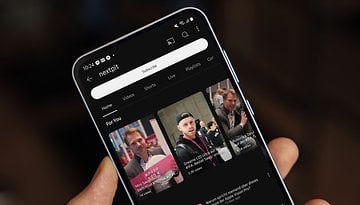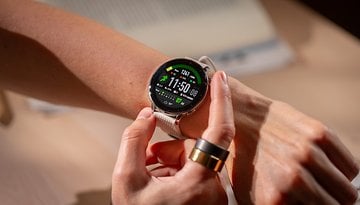Smart cars must learn from nature to thrive


Nature, we know, has a lot to teach us. Given the complexity of new autonomous driving systems, researchers are increasingly drawing inspiration from it to find innovative solutions that can modernize our transport systems and the communication between the various vehicles and the city around them.
Swarm intelligence
Swarm Intelligence (SI) tends to follow very simple rules: although there is no centralized control structure that dictates the behavior of the single units, an order develops between the individuals. Local and random interactions between individuals tend to lead to the emergence of an apparent "intelligent" behavior of the community. In nature, there are many examples such as colonies of ants or swarms of bees.
Let's consider just a swarm of bees: every year the swarm must divide and send some scouts in search of a new place to nest. Hundreds and hundreds of explorers are sent forward to travel for more than 70 kilometers, on their return are made assessments of the different environments. Afterwards, from 400 to 600 bees start to dance to communicate their information and that's how decisions are made.
A professor at Cornell University in New York discovered that bees choose the ideal place more than 80% of the time.
The fascinating thing is that no single bee could make this decision.
The generosity of bees
Bees are probably the most intelligent insects in the world and are an endless source of ideas for our technology. They are able to remember many different places, including their own hive and food sources, despite the enormous distance that can separate them and can move between them with amazing precision.
Individually, bees are not very intelligent, their brains are tiny compared to those of other animals or humans. However, it is together that they make decisions, act for the good of the community and solve complex problems. I can share information but, more interesting for me, I can also share energy.

For example, a bee can return to the hive empty-handed in the event of an exploration trip gone wrong, tired of the journey and without energy. Nevertheless, he doesn't need to enter the hive, wait and queue to get a drop of precious honey before leaving for the adventure. All you have to do is approach another bee with a full stomach and ask for food: the swarm has a sort of shared energy reserve. The process of food sharing transforms a large centralized food container into thousands of small mobile food dispensers.
Taking inspiration from this system, it would be possible to improve the charging network of electric and autonomous cars. Let's say you wake up in the morning to go to work and forget to charge your car or that you have to go on a long journey, so long as to exceed the maximum range guaranteed by the battery of your vehicle. Instead of having to stop (or delay your departure) to recharge, with a technology inspired by bees you could stay on the move by asking your many companions on the road for "nourishment". Not to fill up, just enough to allow everyone to reach the desired destination.

In practice, every single vehicle would become a mobile charging station and the energy of every single car would become collective energy. In this way, we would all be able to stay in motion and reach our destination without the need for inconvenient stops.
The topic is brilliantly explained by German researcher Tim Landgraf during his speech at the TEDx in Vicenza in April 2018, where he also shows some practical examples.
Ants and traffic lights
Another example of swarm intelligence taken into account by researchers involved in the creation of an AI for traffic management is that of ants. Models of constant communication between individuals in a colony, e.g. for the exchange of information about hazards or the location of food sources, are considered for the development of a car-to-car communication system for self-driving cars.
Vehicles equipped with this technology would be able to communicate traffic information and route hazards between them. Cars may be able to receive information about traffic lights that they still can't see thanks to the help of the cars in front of them and decide on the best route. Or even better, the traffic lights could become completely obsolete!

Once all vehicles on the road are driven independently, there will be no need to use a centralized traffic control system such as traffic lights. Each car, communicating with the other vehicles and the surrounding environment, will be able to decide from when to cross a junction, how to adjust its speed in case of convergence of two different roads, when to change lane and so on.
And the penguins?
Imagine a world without the frustration or anxiety of red and yellow traffic lights. A world without accidents, traffic jams, slowdowns. A utopian world? Maybe, but the direction we're taking is the right one. Learning to move like a "pack" will allow you to achieve perfect harmony on the roads. We need to teach our future cars how to move in groups and communicate. What animals are really good at this? Penguins!
Penguins are phenomenal in traveling in packs and synchronizing their dives to catch the fish they need to feed themselves. Studying their behavior could help us to keep our roads safer and more organized.
"No wonder the world's greatest expert on penguin behavior was hired by a car company" - Jim Carroll, World Government Summit 2018 - Dubai (source )
Technology can count on millions of years of experience
The future of electric mobility is already all around us. All you have to do is look up to the sky and you can see flocks of birds twirling gracefully without touching each other. Looking down and looking closer, it is possible to find organized colonies of insects that follow paths only traced by communication between individuals and share information and energy. Nature has taken millions of years to achieve such results, we just need to look and learn with humility.
The revolution that will make our movements completely autonomous is however still far away and the biggest obstacle to overcome is not the technology or algorithms able to regulate the intersections but the difficulty that human beings have to consider themselves part of a "swarm" and to act for the common good.
To quote the astronaut Samantha Cristoforetti:
I like to call it the spaceship Earth and I like to say that we are part of the crew: we are not passengers who can afford to do what they want because someone else will come and fix it. We need to roll up our sleeves and take our responsibilities.
Do you believe that it is possible to make our technology more efficient and functional by being inspired by nature? Let us know what you think in the comments!
Source: Georgemienie.co.za, Jimcarrol.com




















Yeah totally, I also believe we have a lot of things to learn from nature and we can incorporate those to make technology better. The prime example being the deep neural networks that are modeled according to human brain and they are proving to be the best performers for AI.
Anyway, wonderful article, really liked it?
Wow, mount and 2 wings, the intelligence is already assured, and then we have a dream car flying. It's all just left to go and go under water ...
V2v and e2e, they're in development